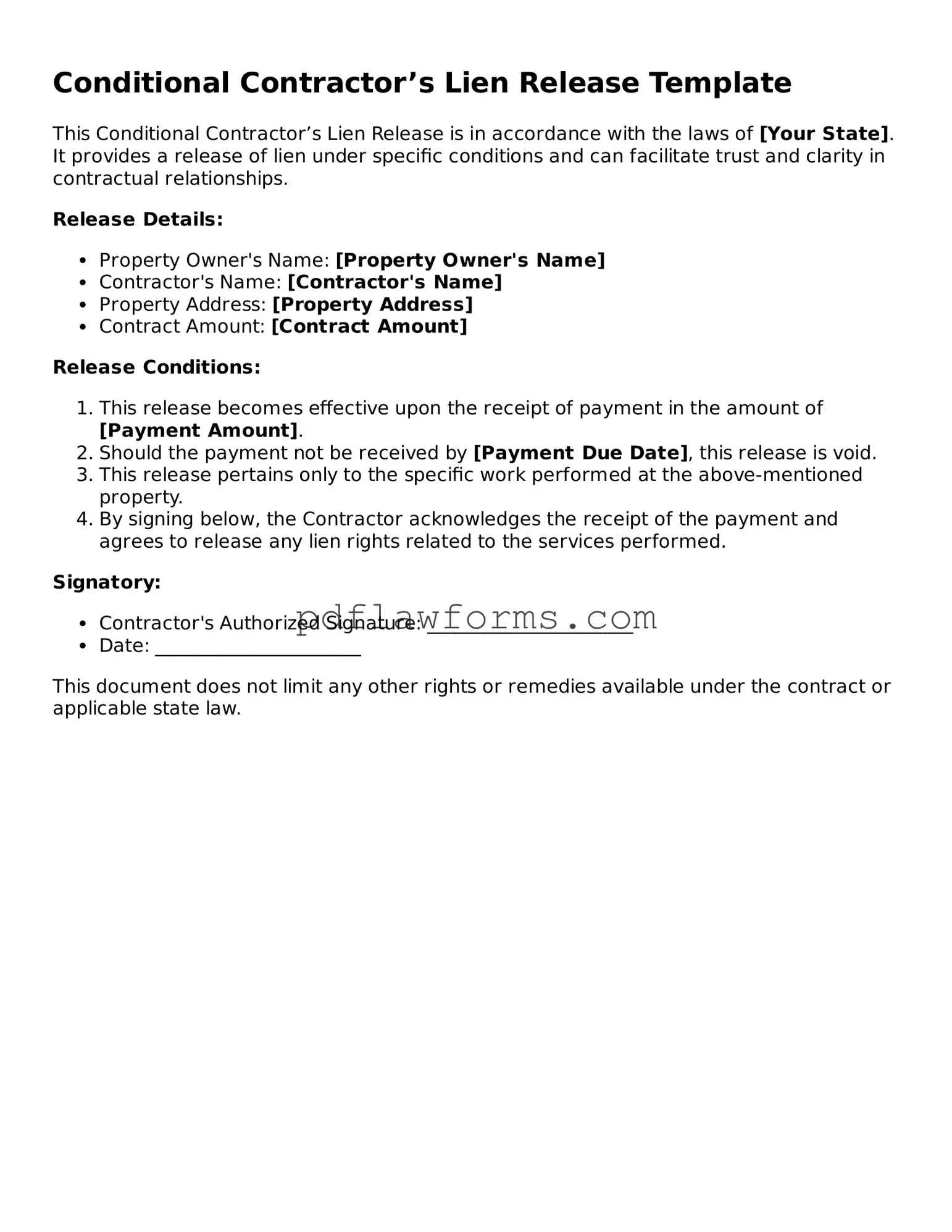Filling out the Conditional Contractor’s Lien Release form can be straightforward, but many people make mistakes that can lead to complications. One common error is failing to include the correct project address. The address should match the one on the contract. If it doesn’t, it may cause delays or disputes.
Another frequent mistake is not signing the form. A signature is crucial for the release to be valid. Without it, the document holds no weight. Sometimes, people forget to date the form as well. A missing date can create confusion about when the release was intended to take effect.
Many individuals also overlook the importance of specifying the amount being released. It is essential to state the exact dollar amount that the lien release covers. If this is left blank or incorrectly filled out, it can lead to misunderstandings between parties.
Inaccurate information about the contractor can also be problematic. This includes misspelling the contractor’s name or providing the wrong business name. Such errors can invalidate the form and complicate matters further.
People often confuse the Conditional Lien Release with an Unconditional Lien Release. Each serves a different purpose. A Conditional Release is contingent on payment, while an Unconditional Release means payment has already been made. Mixing these up can lead to significant issues.
Additionally, some individuals fail to provide supporting documentation when required. This can include invoices or proof of payment. Without these documents, the release may not be accepted by the other party.
Not keeping a copy of the completed form is another mistake. It’s important to retain a copy for personal records. This ensures that all parties have a reference point in case of future disputes.
People sometimes forget to notify all relevant parties about the release. It’s important that everyone involved in the project is informed to avoid confusion later. Proper communication can prevent misunderstandings.
Some individuals also neglect to check local laws regarding lien releases. Different states may have specific requirements that need to be followed. Ignoring these can lead to the form being rejected.
Finally, rushing through the process can lead to errors. Taking the time to carefully review the form before submission can save a lot of trouble down the road. Attention to detail is key in ensuring that the Conditional Contractor’s Lien Release is valid and effective.
